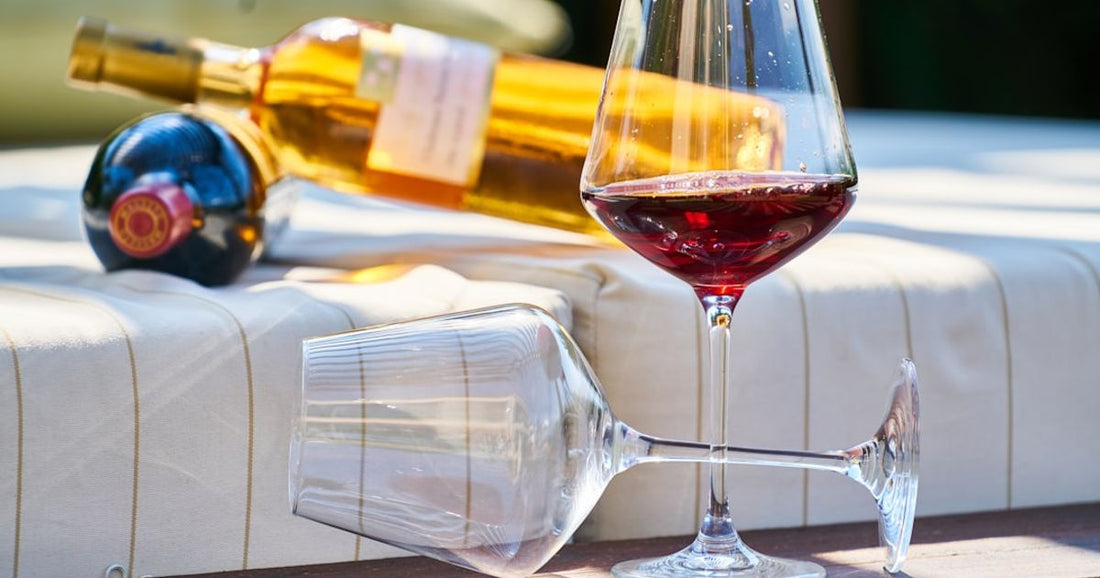
The Role of Sugar in Wine Crafting
Share
Discovering the secret to perfect homemade wine often feels like an alchemical process, where every ingredient must be precisely measured and its effects thoroughly understood. Among these, sugar stands out as a pivotal component, its role far surpassing mere sweetness. This guide is designed to unveil the mysteries of sugar in the winemaking process, offering enthusiasts a deep dive into how to master its contribution for crafting exceptional wines. From fermentation fundamentals to flavor nuances, we'll explore the multifaceted influence of sugar, armed with tips and tricks to elevate your homemade wine.
Key Takeaways
Before we delve into the complexities of sugar in winemaking, let's summarize the essential points to keep in mind:
- Understanding Fermentation: Grasping the process by which sugar is converted into alcohol is fundamental.
- Sugar Content Measurement: Learning how to measure and adjust sugar levels can significantly impact the final product.
- Types of Sugar: Not all sugars are created equal. Knowing which type to use can enhance your wine's flavor profile.
- Balancing Act: Achieving the right balance between sugar and acidity is crucial for a well-rounded wine.
- Advanced Techniques: For those looking to refine their craft, exploring advanced sugar management techniques can offer new dimensions of flavor.
The Science of Sugar and Fermentation
Understanding Fermentation
At the heart of winemaking lies the fermentation process, where sugar plays the starring role. Yeast, a microscopic fungus, consumes sugar present in the grape juice or must, converting it into alcohol and carbon dioxide. This transformation is not just about alcohol production; it also influences the wine's body, flavor, and aroma. The type and amount of sugar, along with the yeast strain used, can drastically alter the wine's character.
Managing fermentation requires not just patience but a scientific approach. Monitoring the sugar levels and temperature, and understanding the yeast's lifecycle, are critical for preventing stuck fermentation or unwanted off-flavors. It's a delicate balance, where too little sugar can result in a weak, underwhelming wine, while too much can overwhelm the yeast, leading to a sweet, unbalanced product.
The Role of Residual Sugar
After fermentation ceases, some sugar often remains, known as residual sugar. This unfermented sugar level significantly affects the wine's sweetness and overall balance. Dry wines have minimal residual sugar, while sweet wines retain a higher sugar content. The winemaker's skill lies in controlling this aspect to achieve the desired sweetness level without compromising the wine's structure or flavor.
Understanding how to measure and adjust residual sugar levels is paramount. Techniques such as back-sweetening, where sugar is added post-fermentation, can rescue a too-dry wine or enhance the flavor profile of certain wine styles. However, this requires a delicate touch to avoid overshadowing the wine's natural characteristics.
Measuring and Adjusting Sugar Content
Hydrometer: The Winemaker's Tool
A hydrometer is an indispensable tool for any winemaker, allowing for precise measurement of the must's specific gravity, which directly correlates to its sugar content. By taking readings before and after fermentation, winemakers can calculate the alcohol content and understand how much sugar the yeast has consumed.
Learning to interpret hydrometer readings accurately is crucial. It not only informs decisions about when to start and stop fermentation but also helps in adjusting sugar levels to achieve the desired alcohol content and sweetness. Regular monitoring can preempt many common winemaking issues, ensuring a smoother process.
Adjusting Sugar Levels
Adjusting sugar levels, whether to increase alcohol content or to balance the wine's sweetness, is a common practice. Adding sugar before fermentation, known as chaptalization, can boost the potential alcohol level in wines made from underripe grapes. Conversely, back-sweetening involves adding sugar after fermentation has ended, carefully calibrated to enhance sweetness without reinitiating fermentation.
Both methods require a nuanced understanding of the wine's composition and the desired outcome. It's not merely about adding sugar; it's about enhancing the wine's natural qualities and achieving a harmonious balance that reflects the winemaker's intent.
Choosing the Right Sugar
Types of Sugar to Use
Not all sugars are equal in winemaking. The most commonly used sugar is sucrose, derived from cane or beet, which yeast easily converts into alcohol. However, other sugars like fructose, glucose, and dextrose can also play roles, each imparting different characteristics to the wine.
Experimenting with different sugars can unlock new flavors and textures. For instance, fructose can enhance the wine's perceived sweetness, while dextrose ferments more cleanly, potentially reducing the risk of off-flavors. The choice of sugar can thus be a strategic decision, tailored to the specific style of wine being crafted.
Natural vs. Added Sugars
The debate between using natural sugars present in the grapes versus adding sugars during winemaking is ongoing. Purists argue for the former, believing it leads to a more authentic expression of the grape and terroir. Others see added sugars as a tool for consistency and balance, especially in years when the grape harvest is less than ideal.
The key is moderation and purpose. Whether enhancing a wine's body, sweetness, or alcohol content, added sugars should complement, not dominate, the wine's natural profile. This approach ensures that the wine remains true to its origins while achieving the winemaker's vision.
Balancing Sugar and Acidity
The Importance of Balance
Achieving the perfect balance between sugar and acidity is crucial for crafting a well-rounded wine. This balance affects not just the taste but the overall perception of the wine. Too much sugar can make a wine cloyingly sweet, masking other flavors, while too much acidity can lead to a sharp, unpleasant taste.
Understanding the interplay between sugar and acidity is essential. Acidity can enhance the wine's freshness and structure, while sugar can soften acidity's bite, creating a more harmonious profile. The goal is a wine that feels balanced on the palate, with neither element overpowering the other.
Techniques for Balancing
Balancing sugar and acidity often requires adjustments during the winemaking process. Acid additions or reductions can correct the must's natural acidity levels, while sugar adjustments can modify sweetness and alcohol content. Blending different batches of wine is another technique, allowing winemakers to fine-tune the balance to their liking.
Taste testing throughout the process is vital. It provides immediate feedback on the balance and allows for incremental adjustments. This hands-on approach ensures that the final product reflects the winemaker's intent and delivers a satisfying experience to the consumer.
Advanced Sugar Management Techniques
For those looking to elevate their winemaking, exploring advanced sugar management techniques can offer new dimensions of complexity and flavor. Techniques such as cold stabilization, which precipitates tartaric acid out of the wine, can impact sugar perception by reducing acidity. Similarly, malolactic fermentation, where malic acid is converted to the softer lactic acid, can create a smoother, rounder wine.
Experimentation is key. Each batch of wine is an opportunity to refine these techniques and discover how subtle changes in sugar management can lead to significant differences in the wine's character. With practice and patience, winemakers can harness sugar's full potential, crafting wines that truly stand out.
In conclusion, mastering the role of sugar in winemaking is both an art and a science. From fermentation fundamentals to balancing sweetness and acidity, understanding sugar's multifaceted contributions is essential for crafting exceptional homemade wine. Armed with these insights, enthusiasts can explore the limitless possibilities that winemaking offers, turning each batch into a unique expression of their skill and creativity.
For those interested in further exploring the nuances of winemaking, consider reading our articles on Mistakes to Avoid in Homemade Wine Making, Developing a Systematic Approach to Wine Tasting, and The Role of Soil Health in Sustainable Winemaking. Each offers valuable insights that can enhance your winemaking journey.



